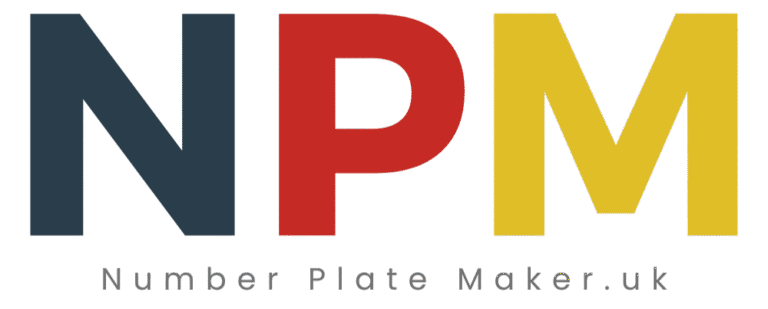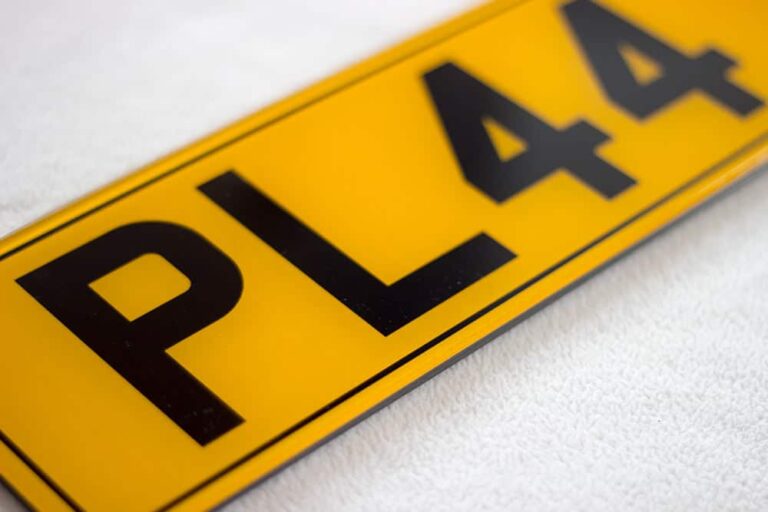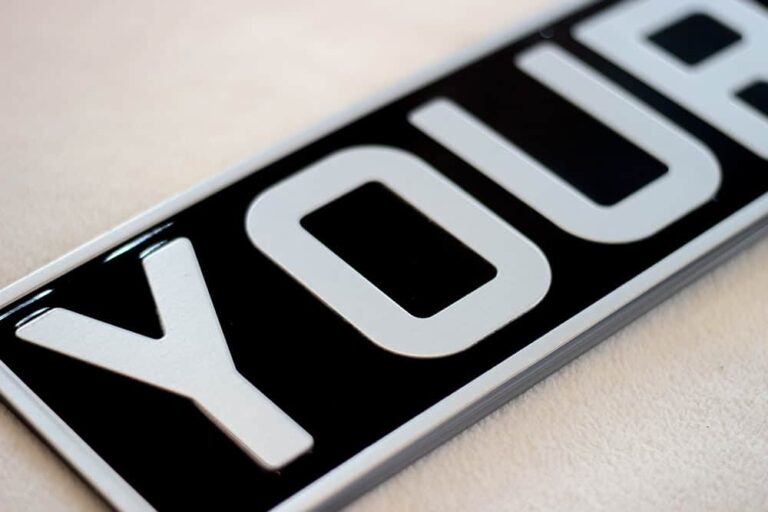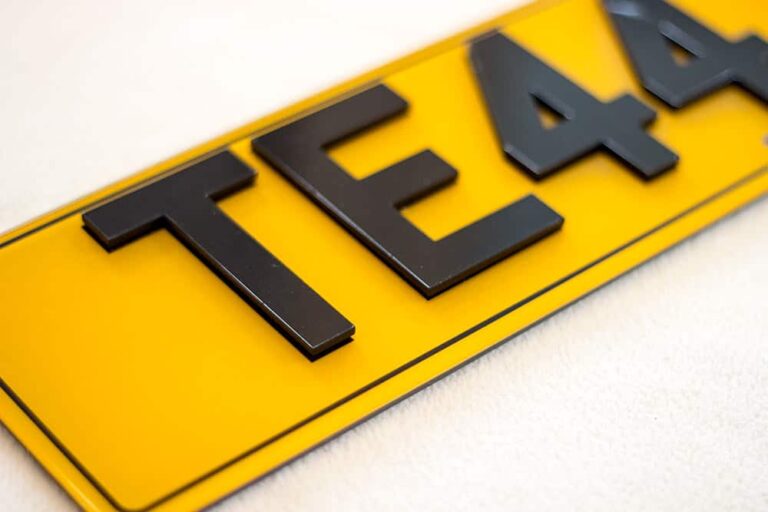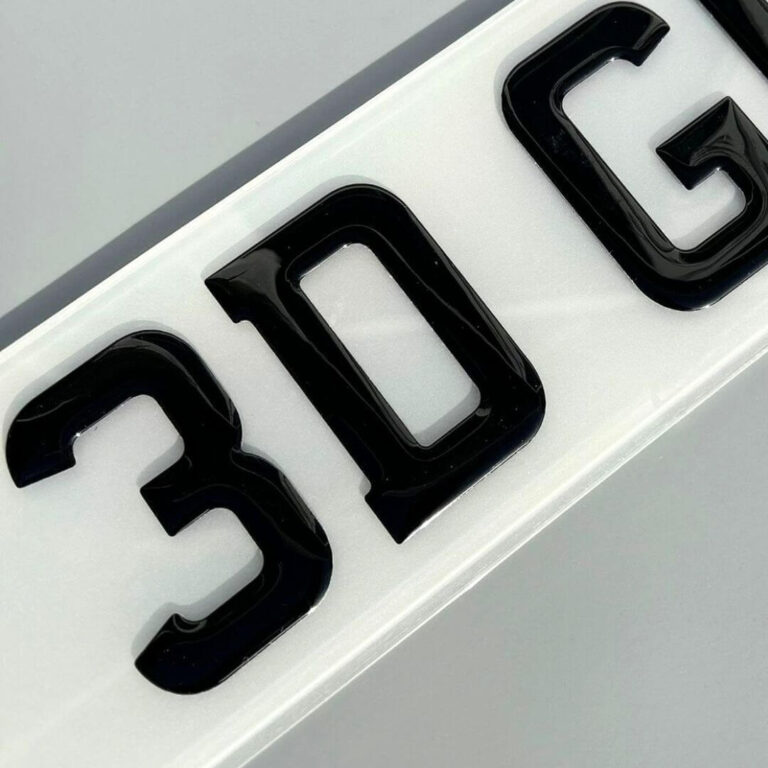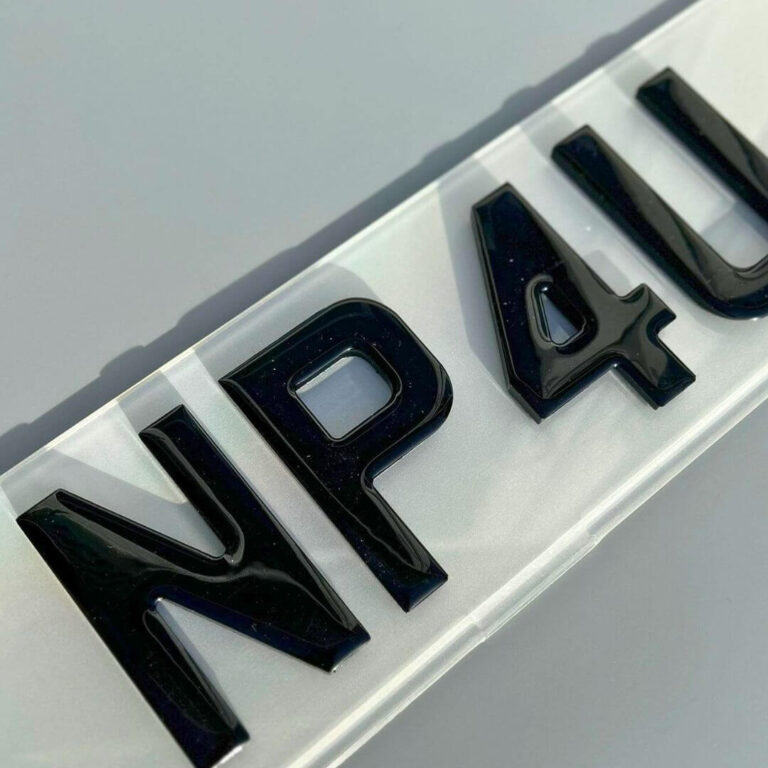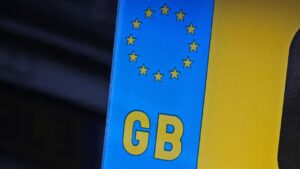Ultimate Number Plate Guide

With new car registrations issued every six months, we figured we’d help you understand what it all entails, so you can be prepared next time a new number plate is issued.
The first two letters of the number plate show the place where the vehicle was registered. The letters LA to LY cover London and MA to MY covers Manchester and Merseyside.
The third and fourth digits are the year in which the car was made and is known as the ‘age marker.’ For example, a car made in 2019 would have ’19’ in its registration. If it is registered in the September change of plate, it will have the same year plus 50, i.e. ’69.’ This is normal for all cars registered since 2001, so you can easily find out the age of a vehicle if you’re trying to buy a used vehicle.
The remaining three letters of the number plate are randomly selected and assigned to dealers when the vehicles are registered.
The new programme will be able to run until February 2051, the last age-identifying being ’00.’ The DVLA is likely to review and upgrade the number plate registration scheme at this time.

How Can I Calculate A Car’s Age?
Calculating the age of a vehicle is critical when determining the price of a car and how much insurance you need to pay for it.
To assess the age of a vehicle, just look at the third and fourth digits of the number plate. The numbers or letters on the plate will always be the same as the last two digits of the year from March. From September, they will be the same as the last two digits of the year plus the 50 digits.
For example, a number plate for a London car registered in March 2019 will read LA19. LA69 would be shown if the London vehicle was registered in September 2019.
How Will A Plate Change Affect Personalised Number Plates?
This all depends on the age of your vehicle. There may be restrictions on registration that may appear on your number plate. It would help if you took care of these limitations before making your decision.
If your customised registration number has an age marker (i.e. the two numbers in the first portion of your number plate), you can only put that number on a vehicle of the same or older era. For example, if your personalised number plate has the numbers 08 or 58 in it, the car will have to be registered in 2008 or later.
It is vital to bear in mind that these limitations do apply to older cars as well. If you wish to start your customised registration plate with a unique name, you must test the previous number plate system to see if it’s appropriate for your vehicle. If you want a W, for example, then you have to make sure that your vehicle was manufactured in or after the year 2000.

The History Of Number Plates
License plates have been around for as long as automobiles have been around. France was the first nation to adopt the licence plate in 1893, followed by Germany in 1896. Then came the Netherlands in 1898, followed closely by the United States in 1901. The United Kingdom officially agreed to participate when, on 1 January 1904, the Motor Car Act made the registration plates a legal requirement.
The first series of plates were released in 1903 and lasted until 1932, consisting of a single or two-letter code which is followed by a sequence number from 1 to 9999. The code indicated to the local authority in whose jurisdiction the vehicle had been registered. In England and Wales, they were initially allocated by population size, as determined by the 1901 census. Thus A indicated London and FP pointed to the smaller population of Rutland.
However, the available codes ran out by 1932. An extended scheme was implemented which put a serial letter in front of the code, and the numbers ran up to 999. By the 1950s, this scheme had already reached a dead end. The following popular and long-running format was the registration prefix. Prefix registrations and those that existed before 2001, all complied with the format of the letter of identification for a single year. Then this would be accompanied by a number that could be one, two or three digits in length. Finally, the registration plate will end with three letters defining the region of the country in which the registration was issued.
Since 2001, the number has become more significant. It is now the number that has been the age marker. Such registrations are in the format of a two-letter prefix (location), a two-digit year identifier and three more randomly selected letters. The year marker functions in this way: in March, the number will actually repeat the final two digits of the year (i.e. 19 in March 2019) and will be added to the number in September (i.e. 69 in September 2019).
If you need help with purchasing a new registration plate or if you have registered a new number plate but need a company to print new plates for you then we can help! Get in touch today.
